Mémoires d'Actuariat
Wise Allocations Testing : How to upgrade your Strategic Asset Allocation using Bayesian Optimization
Auteur(s) CHABIN C.
Société Abeille assurances
Année 2025
Confidentiel jusqu'au 20/01/2027
Résumé
Un sujet majeur pour les compagnies d'assurance vie est de trouver leur SAA (Allocation d'Actif Stratégique), c'est-à-dire la meilleure allocation d'actifs possible pour l'entreprise, étant donné son passif et son appétit au risque. La méthode standard pour trouver cette SAA consiste à tester des centaines d'allocations différentes dans un modèle ALM (Asset & Liability Management), donnant à chaque fois une mesure de risque et une mesure de rentabilité. L'allocation maximisant la rentabilité pour un niveau de risque donné est finalement choisie. Le problème principal avec cette méthode est le temps de calcul, qui limite le nombre d'allocations qui peuvent être testées. Un moyen pour réduire le coût calculatoire est d'analyser le code du modèle ALM à des fins d'optimisation. Une autre voie possible consiste à choisir intelligemment et récursivement les allocations à tester plutôt que de les définir à l'avance, ce qui permet de réduire le nombre d'allocations à tester tout en étant plus pertinent à chaque itération. Dans ce mémoire, la théorie mathématique de l'Optimisation Bayésienne (BO) servira à répondre au dernier point. En bref, l'utilisation de l'optimisation bayésienne a permis de diviser par cinq le temps de calcul nécessaire pour calculer la SAA dans l'entreprise où cette méthode a été implémentée. Le niveau de précision obtenu en calculant la SAA a aussi été grandement amélioré. Mots-clés : optimisation bayésienne, allocation d'actif stratégique, gestion actif-passif, processus gaussien, optimisation multi-objectif, apprentissage machine
Abstract
One essential aspect of a life insurance company’s work is to find their Strategic Asset Allocation (SAA), which is the best asset allocation the company can have, given its liabilities and risk appetite. The standard method to find this SAA is to feed hundreds of different allocations to an Asset & Liability Management (ALM) model, each time yielding both a measure of risk and a measure of profit. The allocation which maximizes the profit under a given level of risk is eventually selected. The main issue in this process is computation time, which limits the number of allocations that can be tested. One way of reducing the computation cost is to analyze the code of the ALM model for optimization. Another path consists in picking wisely and recursively the allocations to be tested instead of defining them in advance, having less allocations to try while being more relevant at each iteration. In this master’s thesis, a mathematical theory called Bayesian Optimization (BO) will be used to answer the latter point. In a nutshell, using BO allowed for a division by five of the time formerly needed to compute the SAA in the company in which it was implemented. The level of precision attained in calculating the SAA was also greatly improved. Keywords: Bayesian optimization, strategic asset allocation, asset & liability management, Gaussian process, multi-objective optimization, machine learning
Auteur(s) CHABIN C.
Société Abeille assurances
Année 2025
Confidentiel jusqu'au 20/01/2027
Résumé
Un sujet majeur pour les compagnies d'assurance vie est de trouver leur SAA (Allocation d'Actif Stratégique), c'est-à-dire la meilleure allocation d'actifs possible pour l'entreprise, étant donné son passif et son appétit au risque. La méthode standard pour trouver cette SAA consiste à tester des centaines d'allocations différentes dans un modèle ALM (Asset & Liability Management), donnant à chaque fois une mesure de risque et une mesure de rentabilité. L'allocation maximisant la rentabilité pour un niveau de risque donné est finalement choisie. Le problème principal avec cette méthode est le temps de calcul, qui limite le nombre d'allocations qui peuvent être testées. Un moyen pour réduire le coût calculatoire est d'analyser le code du modèle ALM à des fins d'optimisation. Une autre voie possible consiste à choisir intelligemment et récursivement les allocations à tester plutôt que de les définir à l'avance, ce qui permet de réduire le nombre d'allocations à tester tout en étant plus pertinent à chaque itération. Dans ce mémoire, la théorie mathématique de l'Optimisation Bayésienne (BO) servira à répondre au dernier point. En bref, l'utilisation de l'optimisation bayésienne a permis de diviser par cinq le temps de calcul nécessaire pour calculer la SAA dans l'entreprise où cette méthode a été implémentée. Le niveau de précision obtenu en calculant la SAA a aussi été grandement amélioré. Mots-clés : optimisation bayésienne, allocation d'actif stratégique, gestion actif-passif, processus gaussien, optimisation multi-objectif, apprentissage machine
Abstract
One essential aspect of a life insurance company’s work is to find their Strategic Asset Allocation (SAA), which is the best asset allocation the company can have, given its liabilities and risk appetite. The standard method to find this SAA is to feed hundreds of different allocations to an Asset & Liability Management (ALM) model, each time yielding both a measure of risk and a measure of profit. The allocation which maximizes the profit under a given level of risk is eventually selected. The main issue in this process is computation time, which limits the number of allocations that can be tested. One way of reducing the computation cost is to analyze the code of the ALM model for optimization. Another path consists in picking wisely and recursively the allocations to be tested instead of defining them in advance, having less allocations to try while being more relevant at each iteration. In this master’s thesis, a mathematical theory called Bayesian Optimization (BO) will be used to answer the latter point. In a nutshell, using BO allowed for a division by five of the time formerly needed to compute the SAA in the company in which it was implemented. The level of precision attained in calculating the SAA was also greatly improved. Keywords: Bayesian optimization, strategic asset allocation, asset & liability management, Gaussian process, multi-objective optimization, machine learning



